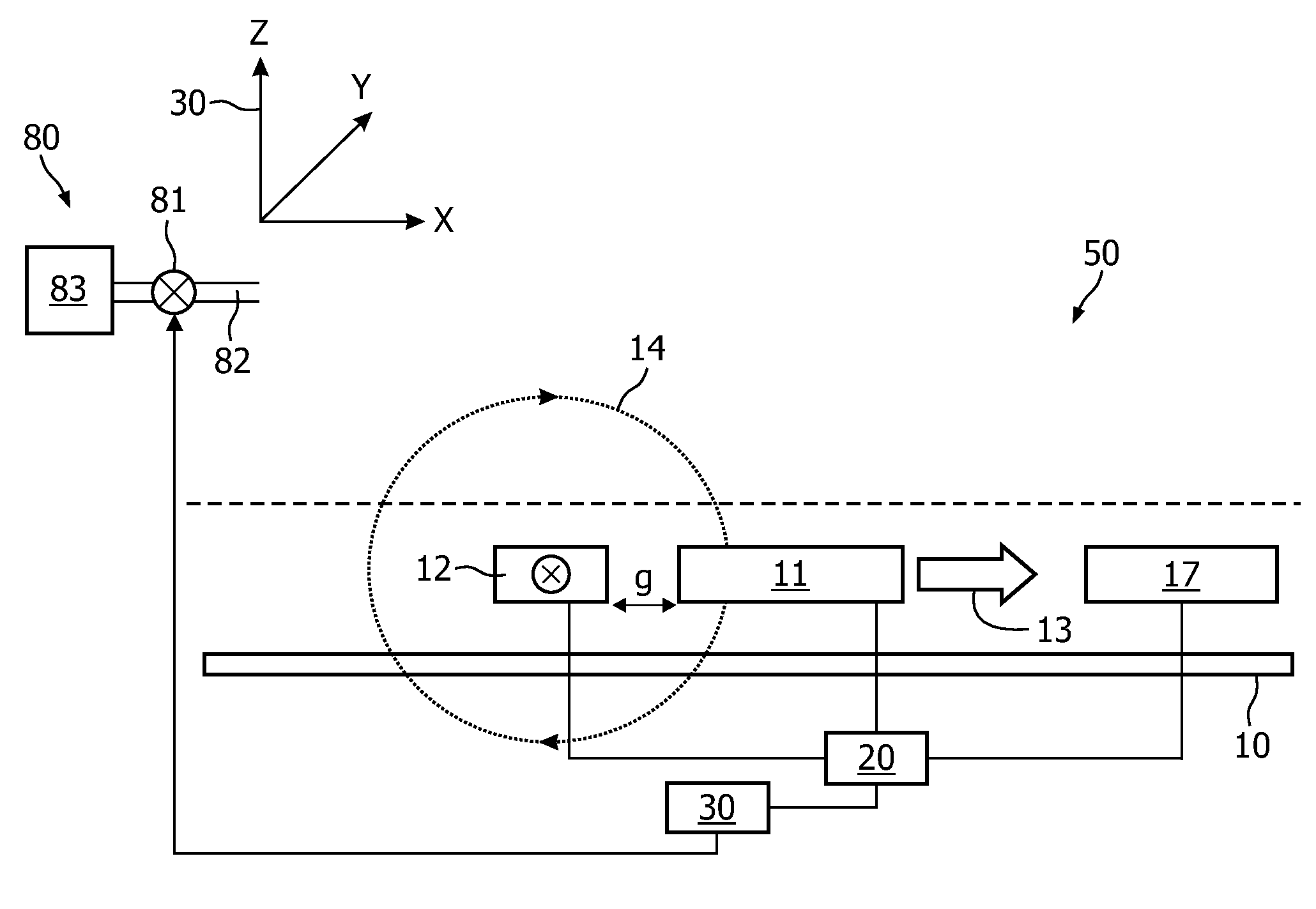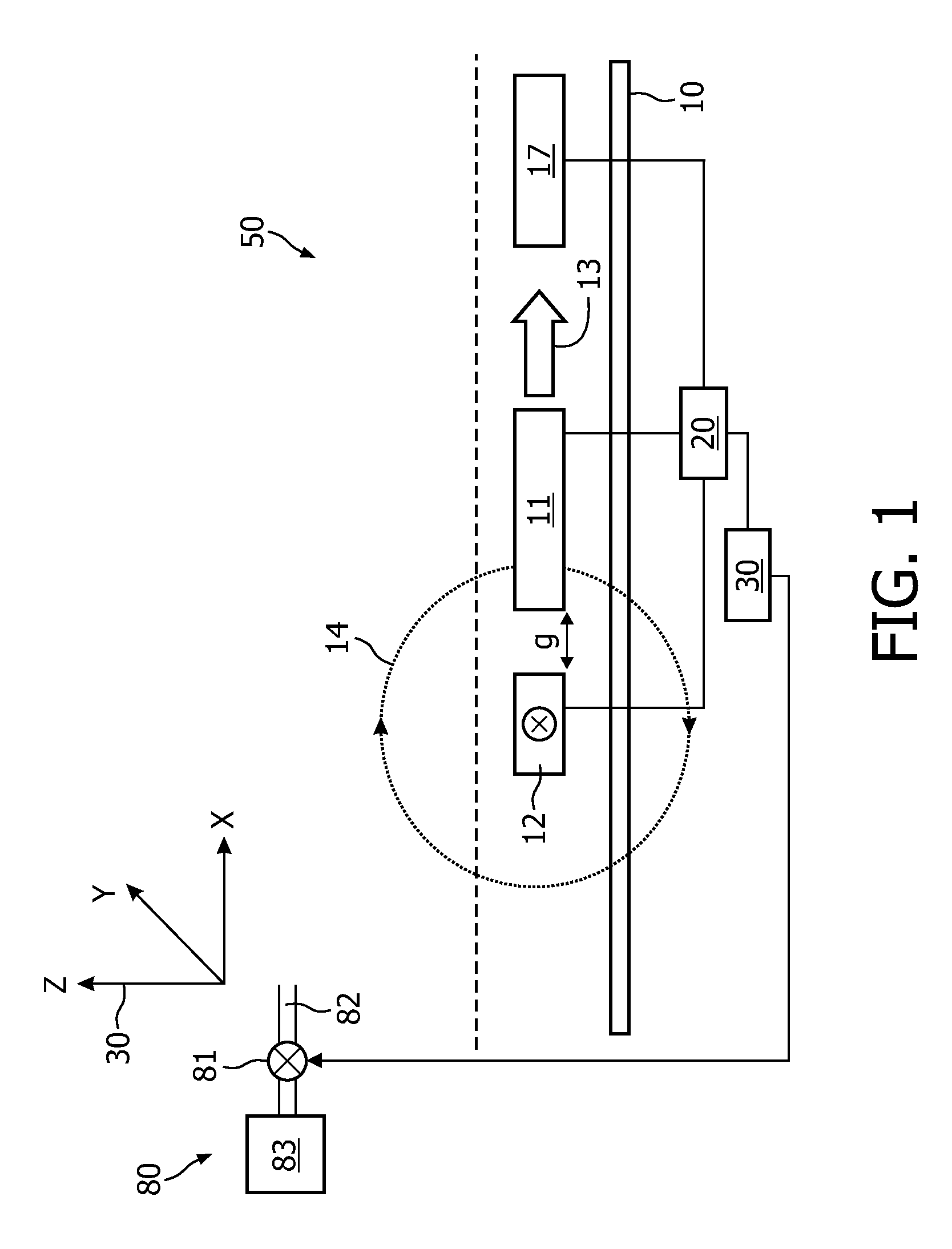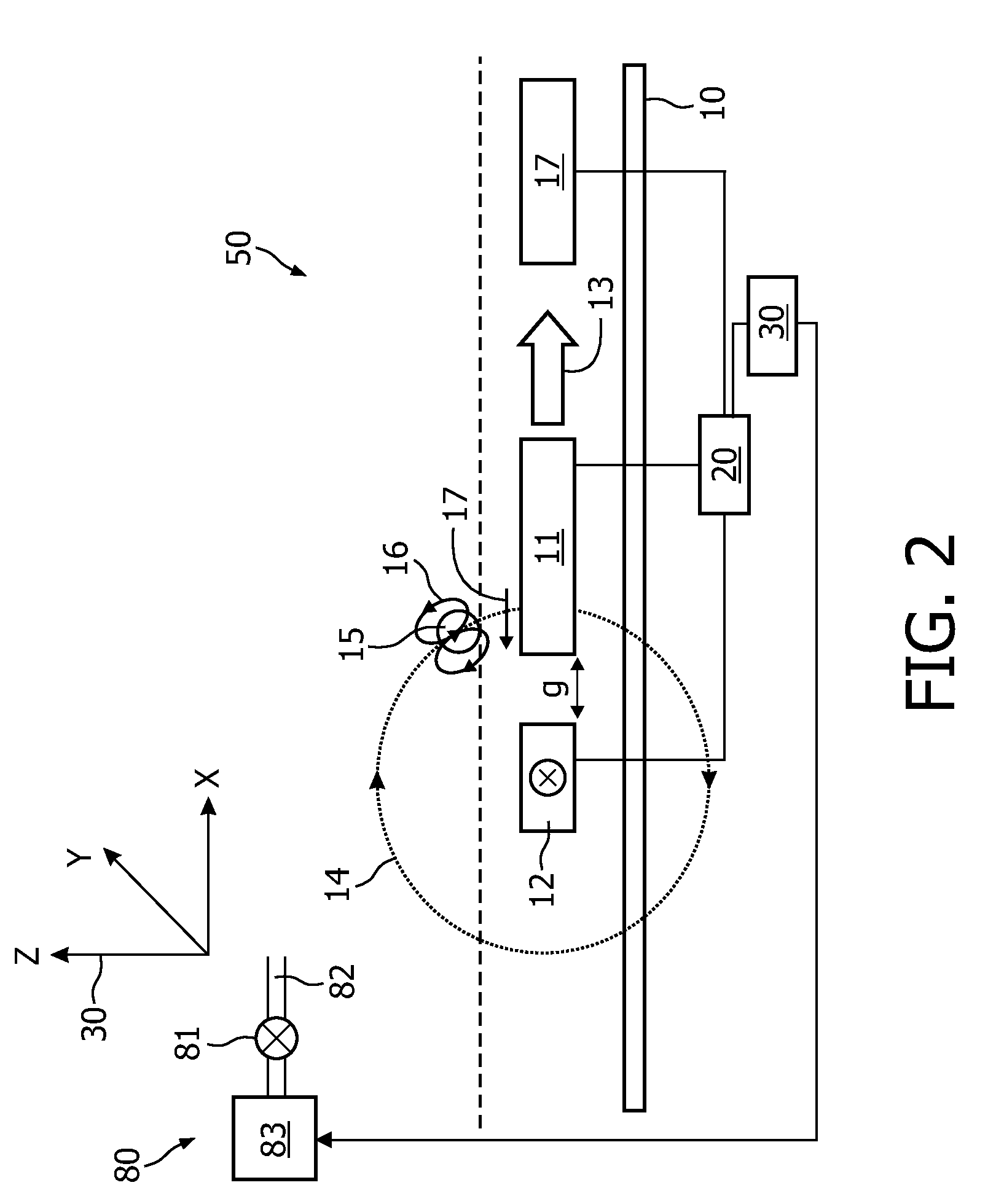Sensor device for and a method of sensing particles
- Summary
- Abstract
- Description
- Claims
- Application Information
AI Technical Summary
Benefits of technology
Problems solved by technology
Method used
Image
Examples
Embodiment Construction
[0081]The illustration in the drawing is schematically. In different drawings, similar or identical elements are provided with the same reference signs.
[0082]The device 50 according to an embodiment of the present invention is a biosensor and will be described with respect to FIG. 1 and FIG. 2.
[0083]The biosensor 50 detects magnetic particles 15 in a sample such as a fluid, a liquid, a gas, a visco-elastic medium, a gel or a tissue sample. The magnetic particles 15 can have small dimensions. With nano-particles are meant particles having at least one dimension ranging between 1 nm and 10000 nm, preferably between 10 nm and 3000 nm, more preferred between 100 nm and 1000 nm. The magnetic particles 15 can acquire a magnetic moment due to an applied magnetic field (for instance they can be paramagnetic). The magnetic particles 15 can be a composite, for instance consist of one or more small magnetic particles 15 inside or attached to a non-magnetic material. As long as the particles 15...
PUM
 Login to View More
Login to View More Abstract
Description
Claims
Application Information
 Login to View More
Login to View More - R&D
- Intellectual Property
- Life Sciences
- Materials
- Tech Scout
- Unparalleled Data Quality
- Higher Quality Content
- 60% Fewer Hallucinations
Browse by: Latest US Patents, China's latest patents, Technical Efficacy Thesaurus, Application Domain, Technology Topic, Popular Technical Reports.
© 2025 PatSnap. All rights reserved.Legal|Privacy policy|Modern Slavery Act Transparency Statement|Sitemap|About US| Contact US: help@patsnap.com



